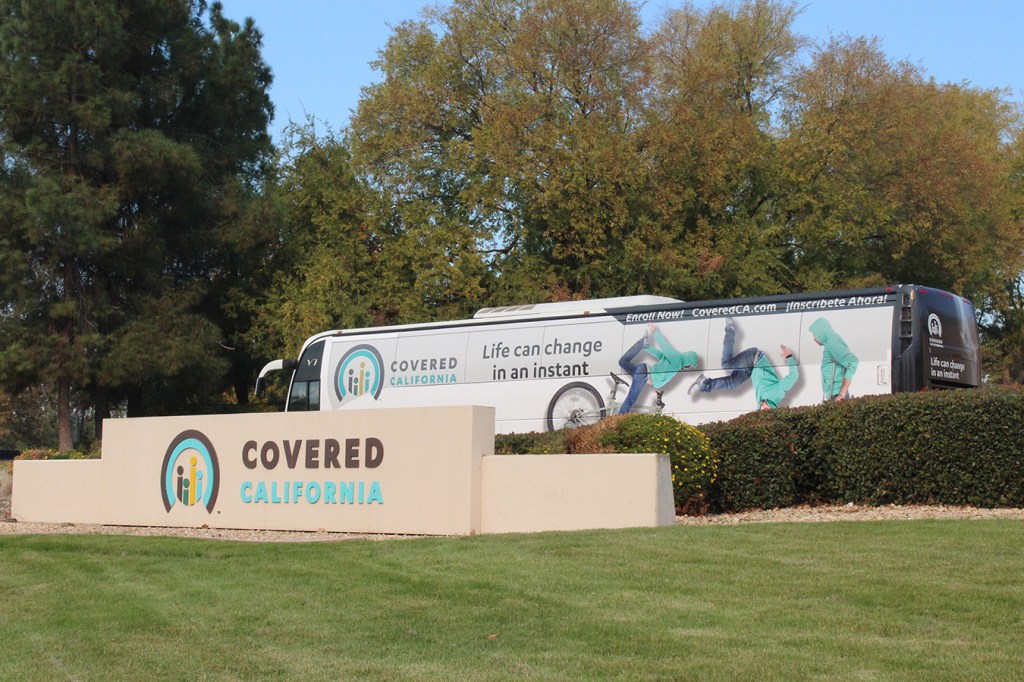[UPDATED at 12:40 p.m. PT]
The number of new enrollees in Covered California health plans plunged by nearly a quarter this year, largely because of the elimination of the federal tax penalty for people without insurance, officials announced Wednesday.
The decrease was steeper than expected — and larger than the drop in new enrollment in the federal marketplace, healthcare.gov. It occurred even as Covered California, the state health insurance exchange, spent millions on advertising to entice people to sign up for coverage during the open-enrollment period that ended Jan. 15.
Overall, about 1.5 million Californians selected a health plan for 2019 coverage, a figure similar to last year’s, the agency said. But new enrollment fell by 23.7 percent, with 295,980 sign-ups, compared with 388,344 last year. Meanwhile, plan renewals remained strong, posting a 7.5 percent increase.
“Recent actions at the federal level appear to be causing large drops in enrollment that will lead to more uninsured and higher premiums for all Californians,” said Covered California Executive Director Peter Lee.
“The federal removal of the individual mandate penalty appears to have had a substantial impact on the number of new consumers signing up for coverage,” he said.
New enrollment in the federal health insurance exchange, healthcare.gov, which serves 39 states, fell to 2.1 million, down 15.8 percent from the previous year, according to preliminary data from the Centers for Medicare & Medicaid Services.
Total enrollment dropped to 8.4 million from roughly 8.7 million in 2018.
The drop in enrollment, especially if fewer healthy people are signing up, could lead to higher premiums, explained David Panush, president of California Health Policy Strategies, a Sacramento-based consulting firm, and former external affairs director for Covered California.
“When you have fewer healthy people enrolling, that has an effect on the risk pool. And when you have a sicker pool that means premiums go up, although so do subsidies,” Panush said. “But for people on the non-subsidized side, that’s a big deal.”
In fact, premium rates have already increased because of the elimination of the penalty for not having health coverage, which took effect this year. Covered California said the average rate increase for 2019 would have been closer to 5 percent — instead of 8.7 percent — if the individual mandate penalty hadn’t been axed as part of the 2017 Republican tax bill.
On his first day in office, California Democratic Gov. Gavin Newsom called for a state-based mandate, which would require all Californians to have health coverage. The legislature would have to approve it, which isn’t guaranteed even with a Democratic majority because the mandate was one of the least popular provisions of the Affordable Care Act.
Penalizing uninsured Californians in this way could raise roughly $500 million a year, Newsom said when he unveiled his proposed budget earlier this month. That money, he suggested, could be used to create state subsidies for Californians who struggle to afford health insurance.
New enrollment fell even though Covered California spent $40 million on ads during the latest open-enrollment period, out of a monster $107 million marketing budget. By comparison, the federal government spent $10 million on advertising.
While advertising is important, it alone doesn’t do the trick, experts say. “You need all three — affordability, a mandate and advertising,” Panush said.
Kevin Knauss, an insurance agent in Granite Bay, Calif., said he believes affordability played the biggest role in the drop in new enrollment. He added that a strong economy means that more people have job-based health insurance, and so they don’t need to buy plans on the open market.
“In my experience, high rates are the primary driver for people not signing up,” not the end of the penalty, Knauss said. “They say ‘I can’t do it, I can’t afford it.’”
At the same time, Knauss said the drop in new enrollment is almost expected, given the evolution of the market.
“We have to remember the market is saturated — Covered California has been around for a while, and people that want to buy have probably already made that decision,” he said.
Doreena Wong, a project director for Asian Americans Advancing Justice, a civil rights organization, said it was harder this year to persuade people to enroll and renew their coverage.
The group, part of a statewide collaborative, receives grant money from Covered California for outreach and enrollment, particularly in immigrant and low-income communities.
“It’s hard to know exactly why, but we have seen at least a 10 percent drop ourselves,” she said.
Wong blames the elimination of the penalty coupled with fear among immigrant communities as reasons for the decline in new enrollment.
She pointed to the proposed “public charge” rule change, which is awaiting final action by the U.S. Department of Homeland Security. The change would allow the federal government to consider legal immigrants’ use of an expanded list of public benefit programs, including Medicaid, food stamps and Section 8 housing, as a reason to deny lawful permanent residency — also known as having a green card. Medicaid is the state-federal health insurance program for low-income people.
Although federal tax credits for plans bought through Covered California are not included in the list of public programs that would be considered, there’s so much confusion among immigrants that some chose to skip enrolling in coverage, Wong said.
“There are fears that communities are experiencing,” she said. “The proposed public charge rule, for example — we’ve gotten a lot of calls about that.”
